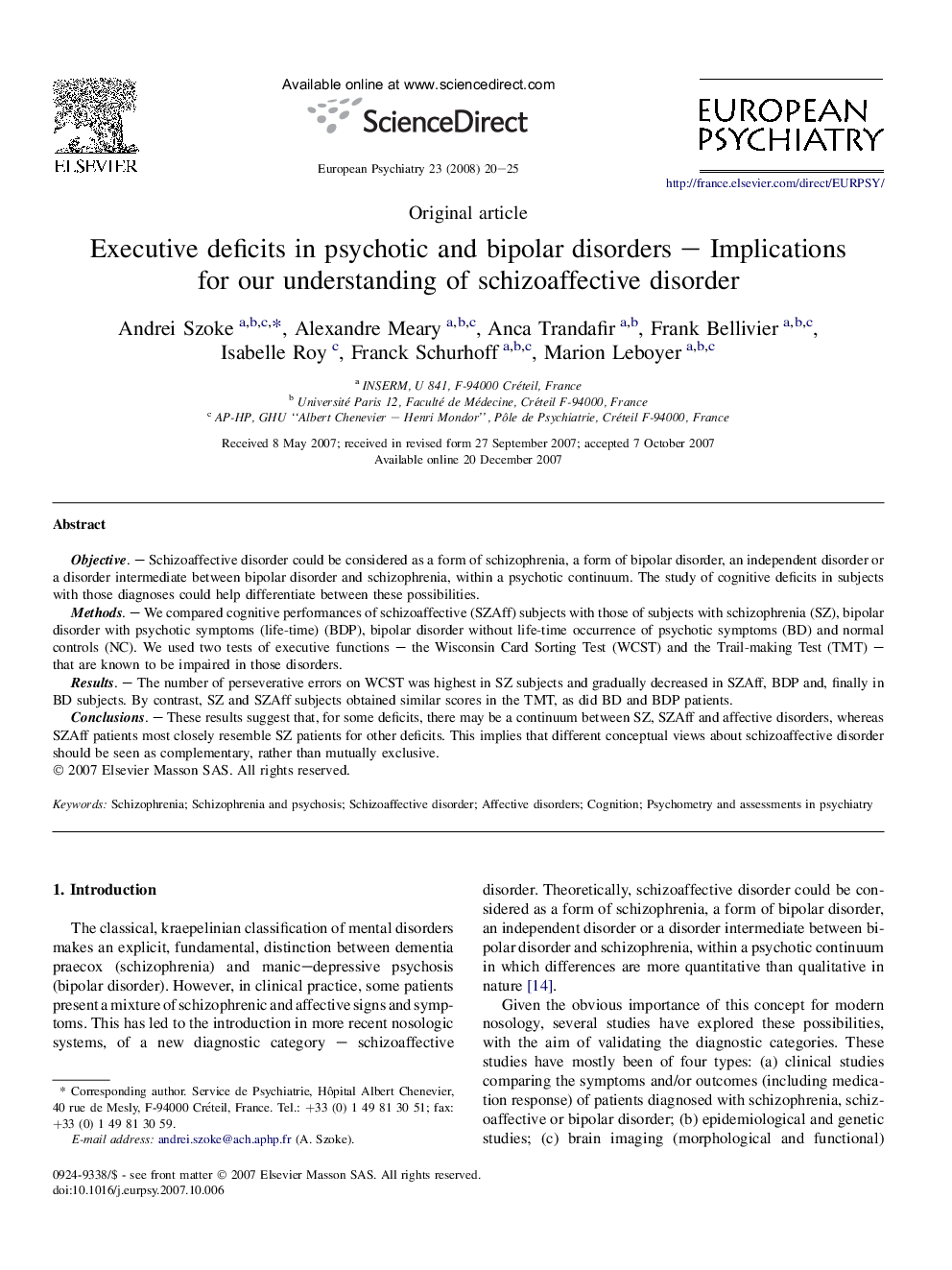| Article ID | Journal | Published Year | Pages | File Type |
|---|---|---|---|---|
| 6229439 | European Psychiatry | 2008 | 6 Pages |
ObjectiveSchizoaffective disorder could be considered as a form of schizophrenia, a form of bipolar disorder, an independent disorder or a disorder intermediate between bipolar disorder and schizophrenia, within a psychotic continuum. The study of cognitive deficits in subjects with those diagnoses could help differentiate between these possibilities.MethodsWe compared cognitive performances of schizoaffective (SZAff) subjects with those of subjects with schizophrenia (SZ), bipolar disorder with psychotic symptoms (life-time) (BDP), bipolar disorder without life-time occurrence of psychotic symptoms (BD) and normal controls (NC). We used two tests of executive functions - the Wisconsin Card Sorting Test (WCST) and the Trail-making Test (TMT) - that are known to be impaired in those disorders.ResultsThe number of perseverative errors on WCST was highest in SZ subjects and gradually decreased in SZAff, BDP and, finally in BD subjects. By contrast, SZ and SZAff subjects obtained similar scores in the TMT, as did BD and BDP patients.ConclusionsThese results suggest that, for some deficits, there may be a continuum between SZ, SZAff and affective disorders, whereas SZAff patients most closely resemble SZ patients for other deficits. This implies that different conceptual views about schizoaffective disorder should be seen as complementary, rather than mutually exclusive.
